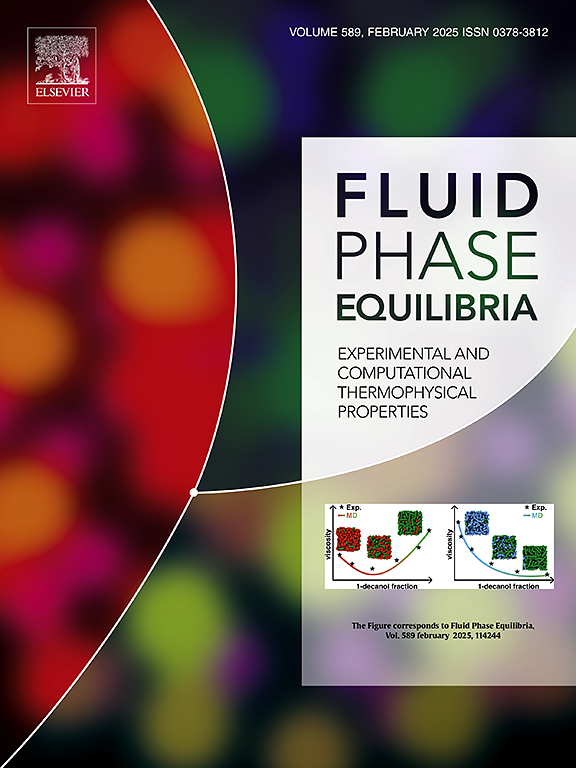A second-order Dry Glass Reference Perturbation Theory for modeling sorption in glassy polymers: applications to systems containing light gases, alcohols, and water vapor
IF 2.8
3区 工程技术
Q3 CHEMISTRY, PHYSICAL
引用次数: 0
Abstract
The solubility of gases and vapors plays a critical role in determining the overall performance of membrane-based separation processes. Through the use of advanced Equations of State (EoS), the Non-Equilibrium Thermodynamics for Glassy Polymers (NET-GP) theory rose into prominence as a powerful correlative and predictive tool for the sorption of guest species in glassy polymers. The recently proposed Dry Glass Reference Perturbation Theory (DGRPT) provided a method to account for the polymer swelling through the NET-GP framework. In this work, we introduce a second-order modification to the DGRPT that improves upon the model’s flexibility in representing different types of isotherms. We have also investigated different association and parameterization schemes for water and alcohol sorption using the PC-SAFT EoS in glassy polymers. For the non-self associating polymers investigated here, our results concluded that the sorption of alcohols can be represented adequately using the induced association assumptions formulated by Kleiner and Sadowski. On the contrary, the same assumptions often lead to poor water sorption results. We speculate that the Wolbach and Sandler combining rule may be incapable of representing the cross-association effects between water and the glassy polymer. As a result, we fitted the cross association volume of bonding (κ) on the sorption data while fixing the cross association energetic parameter (ε) to half of water’s parameter. The adjusted κ can then be treated as a temperature-independent parameter, while the effects of temperature variation can be delegated to the binary interaction parameter (k).

求助全文
约1分钟内获得全文
求助全文
来源期刊

Fluid Phase Equilibria
工程技术-工程:化工
CiteScore
5.30
自引率
15.40%
发文量
223
审稿时长
53 days
期刊介绍:
Fluid Phase Equilibria publishes high-quality papers dealing with experimental, theoretical, and applied research related to equilibrium and transport properties of fluids, solids, and interfaces. Subjects of interest include physical/phase and chemical equilibria; equilibrium and nonequilibrium thermophysical properties; fundamental thermodynamic relations; and stability. The systems central to the journal include pure substances and mixtures of organic and inorganic materials, including polymers, biochemicals, and surfactants with sufficient characterization of composition and purity for the results to be reproduced. Alloys are of interest only when thermodynamic studies are included, purely material studies will not be considered. In all cases, authors are expected to provide physical or chemical interpretations of the results.
Experimental research can include measurements under all conditions of temperature, pressure, and composition, including critical and supercritical. Measurements are to be associated with systems and conditions of fundamental or applied interest, and may not be only a collection of routine data, such as physical property or solubility measurements at limited pressures and temperatures close to ambient, or surfactant studies focussed strictly on micellisation or micelle structure. Papers reporting common data must be accompanied by new physical insights and/or contemporary or new theory or techniques.
 求助内容:
求助内容: 应助结果提醒方式:
应助结果提醒方式:


